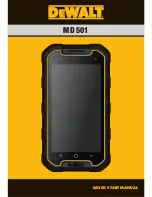
198
•
World health Organization (WHO):
http://www.who.int/peh-emf/
•
International Commission on Non-Ionizing Radiation Protection:
http://www.icnirp.de
•
National Radiation Protection Board (UK):
http://www.nrpb.org.uk
•
US food and Drug Administration
http://www.fda.gov/cellphones
Road Safety
Your wireless phone gives you the powerful ability to
communicate by voice, almost anywhere, anytime. But
an important responsibility accompanies the benefits of
wireless phones, one that every user must uphold.
When driving a car, driving is your first responsibility.
When using your wireless phone behind the wheel of a
car, practice good common sense and remember the
following tips:
1.
Get to know your wireless phone and its features, such
as speed dial and redial. If available, these features help
you to place your call without taking your attention off
the road.
2.
When available, use a hands-free device. If possible, add
an additional layer of convenience and safety to your
wireless phone with one of the many hands free
accessories available today.
3.
Position your wireless phone within easy reach. Be able
to access your wireless phone without removing your
eyes from the road. If you get an incoming call at an
inconvenient time, let your voice mail answer it for you.
Summary of Contents for BlackJack
Page 16: ...16 ...
Page 46: ...46 ...
Page 56: ...56 ...
Page 98: ...98 ...
Page 104: ...104 ...
Page 122: ...122 ...
Page 130: ...130 ...
Page 140: ...140 ...
Page 144: ...144 ...
Page 164: ...164 ...
Page 180: ...Section 15 Troubleshooting 180 ...
Page 181: ...Section 15 Troubleshooting 181 ...
Page 182: ...Section 15 Troubleshooting 182 ...
Page 183: ...Section 15 Troubleshooting 183 Program Problems ...
Page 184: ...184 ...
Page 212: ...212 ...
















































